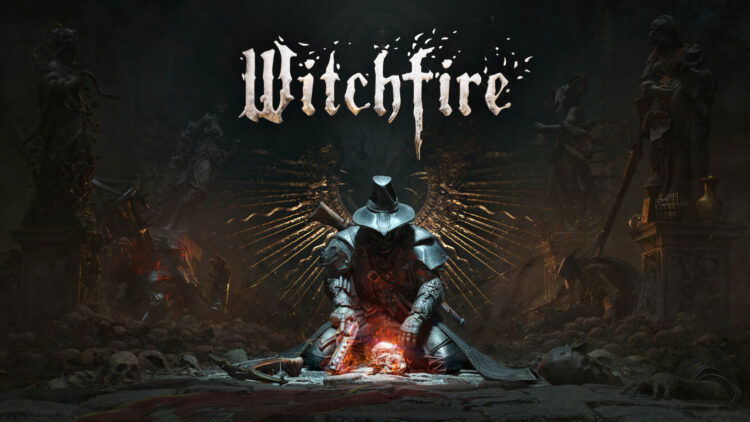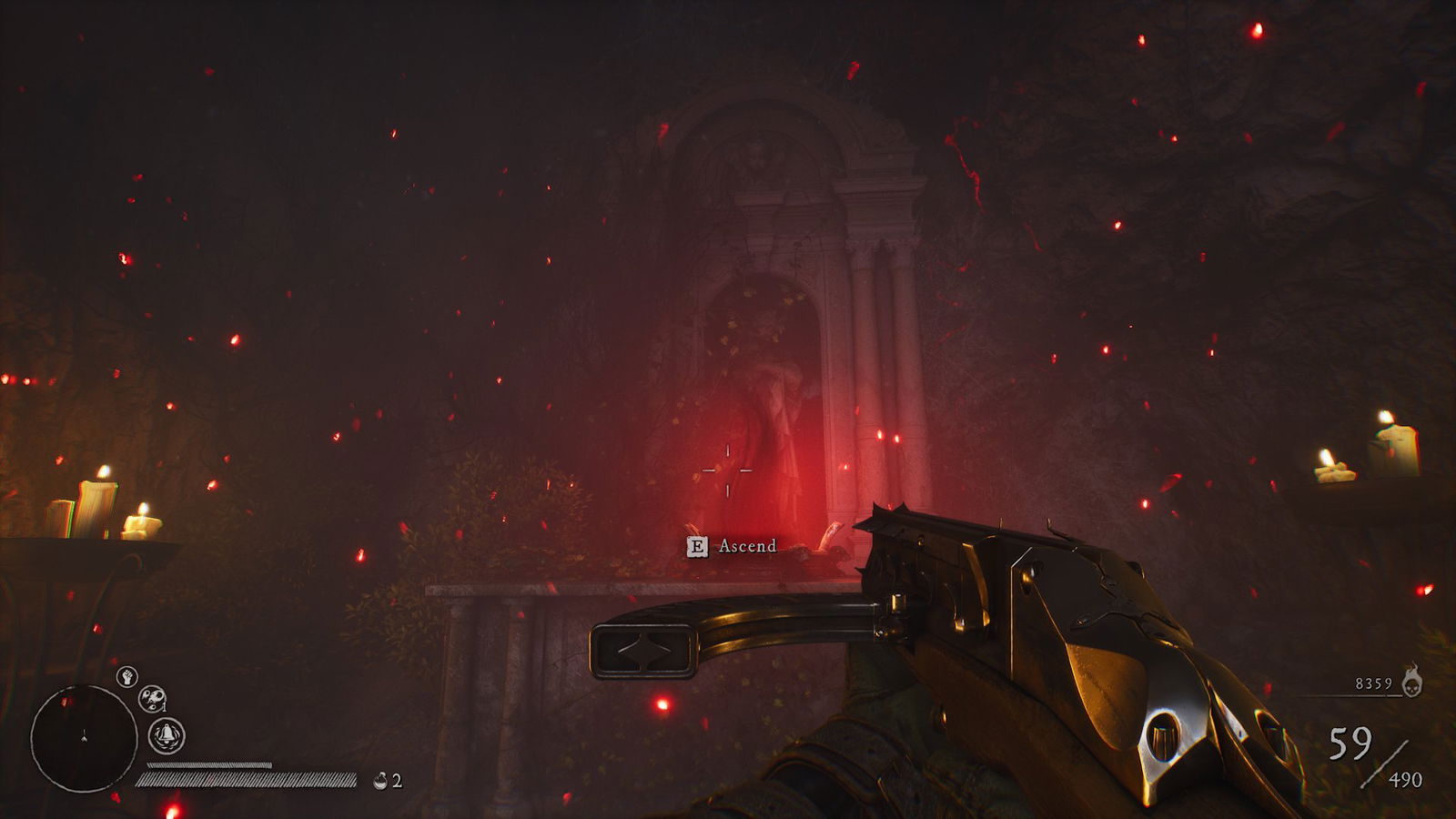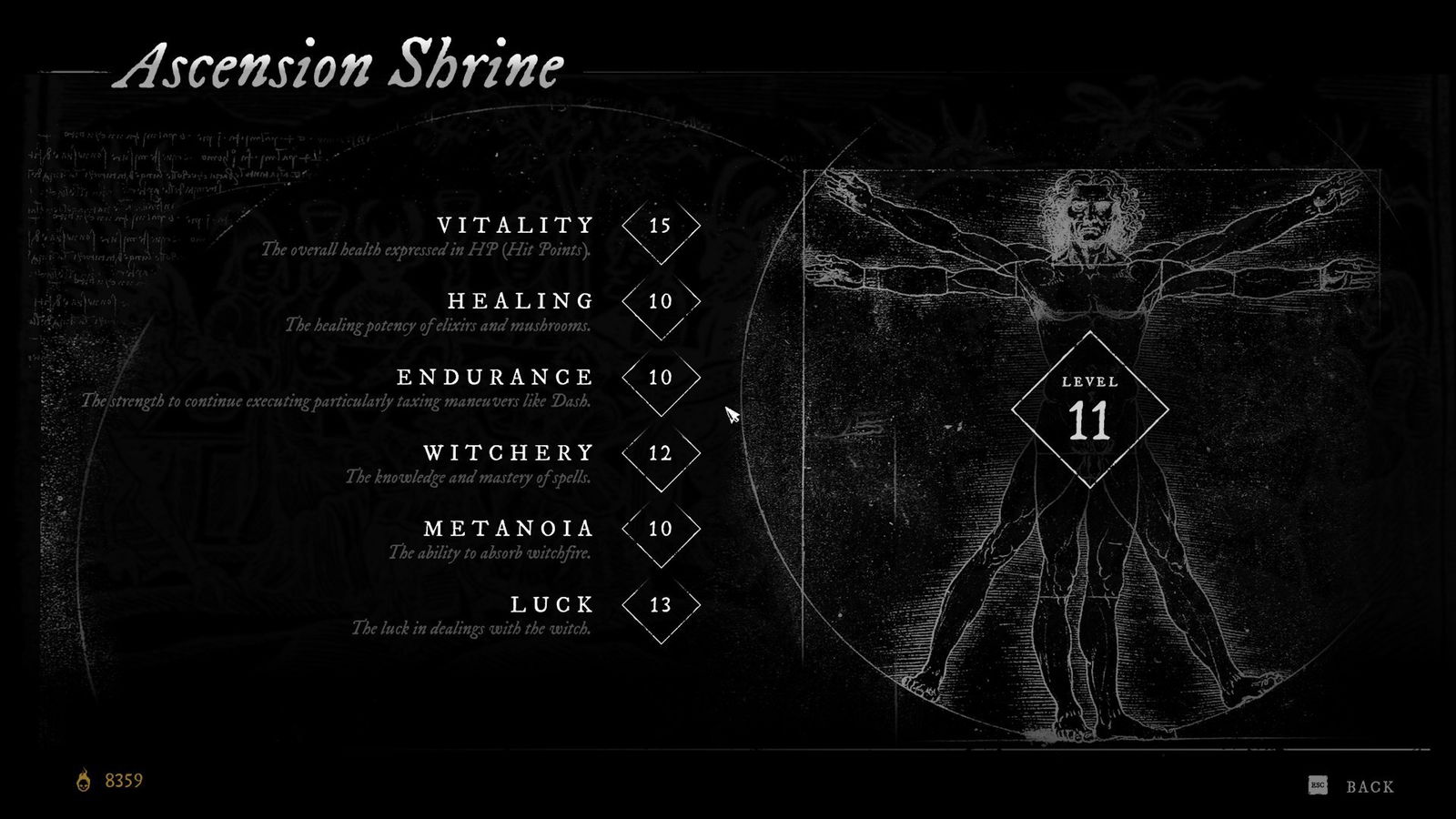Witchfire is a punishing first-person shooter with roguelike elements that I like to describe as what a Soulslike first-person shooter would be like. Sure, the developer, The Astronauts, calls it a roguelike, but it shares so many similarities with the Soulslike games we’ve all played for years that it feels like one. It’s the Dark Souls FPS I’ve always wanted.
In Witchfire, you play as a Preyer, a person who gains special powers from Witchfire, which also allows the Preyer to level up in any way they deem fit. This is both a blessing and a curse if you plan on pushing your way past the hordes of enemies that want to take you down.
Below are a few tips I’ve learned from my playthrough of Witchfire, which will help you survive a little longer by avoiding the same mistakes I made when I first started playing the game
Picking the right stats in Witchfire is key
Make your way to the Ascension Shrine in the Shrouded Hermitorium, which functions as the game’s hub. This is the only place (for now) where you can spend the Witchfire you accumulate in the world. You’ll find Witchfire by killing enemies, which you absorb, as well as crystallized chunks (small, medium, and large) that will drop from enemies or be found in chests.
At the Ascension Shrine, you can select from the following stats. I’ve numbered the ones I felt were more important:
- Vitality (health) – 1
- Healing (how much healing elixirs will heal you) – 6
- Endurance (stamina) – 4
- Witchery (affects spell cooldowns and number of spells) – 5
- Metanoia (affects how much Witchfire drops from enemies) – 3
- Luck (determines drop rate percentage) – 2
While each stat is important, I found it better to focus on three during your first few hours with the game: Vitality, Luck, and Metanoia, in that order. Investing more Witchfire into your Vitality grants you extra health and boosts your healing elixirs, which is beneficial. The more health you have, the harder it is for the hordes to kill you, which is a win in my book. Once I had 150 HP, I started focusing on Luck and Metanoia.
With Luck and Metanoia, I alternated by putting one level into each until both were at level 16. This gave me ample Witchfire from enemies, and drops such as crystallized Witchfire, keys, ammo, and more became readily available. Of course, you can do as you wish, but this strategy worked well for me.
After that, I focused on Endurance and Witchery. Since I prioritized upgrading my weapons, I initially ignored Witchery. However, once the guns were doing enough damage, Witchery became a valuable supplement, as there are helpful offensive and defensive spells. Just like with Luck and Metanoia, I alternated until I was satisfied with both stats.
That leaves Healing, which won’t be as important if you have a healthy amount of HP. However, it does improve the amount of healing that elixirs provide. At first, they don’t heal for much, and healing in Witchfire is a heal-over-time effect, not instant, which isn’t helpful in the middle of a fight. This is another reason I recommend pumping points into Vitality first.
If you ever get lost in thought about which stat to invest in, it should always be Vitality. Anything that helps keep you alive is a good choice.
There’s no such thing as a free lunch
While you’re leveling up your Preyer, keep these things in mind. First, whenever you level up a stat, the cost to upgrade the others will increase. More importantly, as you level up, things will become more challenging. The Witch, the end-game boss not available to fight in Early Access but present in the game, will throw more challenges at you the more you level up, including tougher enemies and events.
Witchfire is now available for PC in the Epic Game Store and Steam.




